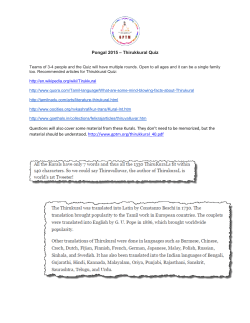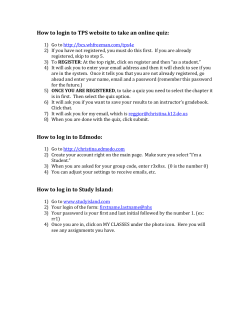
(BILD 3) ORGANISMIC AND EVOLUTIONARY BIOLOGY SPRING
1 BIOLOGY 3 (BILD 3) ORGANISMIC AND EVOLUTIONARY BIOLOGY SPRING 2010 OUTLINE OF COURSE Christopher Wills 3802 AP&M X44113, cwills@ucsd.edu Office Hours: MWF 11-1 (or by appointment) This course deals with the living world at the level of populations and ecosystems. It is designed to introduce students to the fields of evolution, systematics, ecology and behavior. The major focus of the course will be on evolution, since an understanding of the evolutionary process enables us to grasp why there are so many different kinds of living things, how they interact with each other to produce complex ecosystems, how these interactions have sometimes led to the evolution of complex behaviors, how evolution has often brought about large changes in body plan, and how species (including ourselves) are likely to continue to evolve. We will also examine the basic principles of ecology that govern how groups of species interact, and show how evolutionary and ecological processes have together shaped the planet. During the course we will explore our own effects on the process of evolution and on the planet’s biosphere, as we change the climate and alter the world’s ecosystems. PREREQUISITES: There are no official prerequisites for this course, but you may have trouble unless you have had at least a good biology course in high school. You can get away without such preparation only if you are willing to do some extra work. We will assume that you know the rules of Mendelian genetics, that you understand mitosis and meiosis, and that you know the basics of molecular biology — how genetic information is transferred from DNA to RNA and then to protein. If you don’t, you will be at a great disadvantage unless you do some extra reading in Units 1 and 3 of the text and attend the workshops that the TAs will conduct in section. LECTURES: Lecture section A00 Lecture section B00 MWF 10:00 to 10:50, Warren Lecture Hall 2001 MWF 1:00 to 1:50, Solis 107 ENROLLMENT: The class is slightly overenrolled, and you may be on the waiting list. Hang in there! Everybody who wants to take the class should be able to enroll. If you drop the class, please let Biology Student Affairs know right away, so that somebody can take your place. If you are on the wait list, be sure to attend lectures and sign up for a section so that you do not fall behind. WEB SITE: You will need a username and password to get to the BILD 3 web site. Most of you have one already, and will be able to access the WebCT site. If you cannot access the site, please let the WebCT office in AP&M know right away. What will be on the web site? The notes for each class, arranged by lecture, will be available soon after each lecture. The notes will include copies of many, but not all, of the slides that are shown during the class. You can download the notes as PDF files and read 2 them in Adobe Acrobat or Acrobat Reader. I will also post interesting readings from the original literature and the short films that are shown in class. Before the midterm and final, some sample questions from old exams will be posted. Announcements of exam room changes, field trips and many other matters will be posted at the head of the site. Check the site often! There will also be an online discussion board on the site, moderated by the TAs. You can ask the TAs difficult questions, and discuss interesting matters that come up in class. Please confine your contributions to the discussion board to matters directly relevant to the course material, or you will waste everybody’s time. And please check to see whether your question has already been answered before you post it. If you want to post an answer to a question, be sure to check with your TA first so that you are confident you are right and don’t lead everybody astray. MIDTERM: Friday April 30, in your lecture hall room at the same time as the lecture. FINAL EXAM: A00, MWF at 10: Monday June 7, 8-11am (room to be announced) B00, MWF at 1: Thursday June 10, 11:30 am to 2:30 pm (room to be announced) APPORTIONMENT OF GRADES: The midterm will count 30%, the final 50% and the section quizzes 20% of your grade. SECTIONS: You must be registered for a section. Instructions for how to register are on the class WebCT site. There is a limit of 30 for each section. A list showing the TA in charge of each section will be posted shortly on the web site. ATTENDANCE AT A SECTION IS MANDATORY FOR THE CLASS. YOU MAY REGISTER FOR ANY ONE OF THE SECTIONS, BECAUSE BOTH LECTURE SECTIONS WILL COVER EXACTLY THE SAME MATERIAL. THERE WILL BE NO SECTIONS DURING THE FIRST FULL WEEK OF CLASSES. SECTIONS START THE WEEK OF MONDAY APRIL 5. There are three main purposes to the section meetings. a) Some time in each section will be devoted to questions and answers dealing with material in the readings or in the lectures. There is additional material in the text readings listed below that will not be covered in the lectures, so be sure to read the material thoroughly so that you can discuss it in sections! b) Five twenty-minute quizzes will be given during the quarter in the section meetings. NOTE THAT THERE WILL BE A QUIZ DURING THE FIRST SECTION MEETING, WHICH TAKES PLACE DURING THE SECOND WEEK OF CLASSES. THE QUIZ WILL COVER THE FIRST WEEK OF CLASS MATERIAL AND READINGS, SO COME PREPARED! Remember that these quizzes count for a total of 20% of your grade, so do not 3 treat them lightly. BE SURE TO TAKE YOUR QUIZZES AT THE PROPER TIME AND PLACE! NOTE THAT UNLESS YOU HAVE OBTAINED PRIOR PERMISSION, YOU WILL NOT BE PERMITTED TO TAKE A QUIZ IN ANOTHER SECTION! For each week that you delay taking a quiz (without a bona fide medical excuse), 25% will be subtracted from the quiz score. We have a liberal policy about makeups, but only if you let your TA know about any medical or family problem as soon as possible. c) The TAs will conduct workshops covering basic information that you need in the course. If you are unsure about the difference between mitosis and meiosis, or DNA and RNA, be sure to come to these sessions! d) The sections will also act as clearing houses for information about events such as field trips that will take place at various times during the quarter. SECTION TIMETABLE: Week of: April 5 12 19 26 May 3 10 17 24 31 Quiz Workshop on basic genetics Quiz Workshop on geological timetable Quiz Quiz Workshop on basic ecology Quiz (note there is a holiday on Monday, so students in Monday sections must take their quiz in another section) COURSE TEXT: Biology by Campbell and Reece (7th or 8th edition) LECTURE OUTLINE (APPROXIMATE) AND TEXT READINGS. 7 = 7TH EDITION OF CAMPBELL, 8 = 8TH EDITION Lecture Date Topic 1. March 29 Scope of the course. DARWIN AND NATURAL SELECTION. History of the idea of evolution before Darwin. Darwin and the voyage of the Beagle. 7, pp. 438-442. 8, p. 452-456 2. March 31 Characteristics of Darwin’s theory. Natural and artificial selection. Some of the immediate consequences of and difficulties with the theory and how they were resolved. 7, pp. 442-451. 8, pp. 456-459 3. April 2 Darwin’s incorrect understanding of how characteristics are inherited, and the problems this posed for his theory. How genetics 4 and Darwinian evolution were brought together in the NeoDarwinian synthesis. 7, pp. 454-455. 8, pp. 458-459 4. April 5 COMPONENTS OF THE NEO-DARWINIAN SYNTHESIS. The Hardy-Weinberg Law and factors that disturb Hardy-Weinberg equilibrium. (1) Mutation and the types of mutation. 7, pp. 455-460. 8, pp. 470-475, 434-435 5. April 7 Mutation continued. Gene duplications and deletions and how genomes evolve. An introduction to natural selection. 7, pp. 460, 504-507. 8, pp. 435-442 6. April 9 (2) Natural selection and how it affects phenotypes, with examples. Natural selection and Darwin’s finches. 7, pp. 462-464. 8, pp. 456, 460-461 7. April 12 Stabilizing and disruptive selection, with examples. Selection that maintains polymorphisms: selection for heterozygote advantage. 7, pp. 465-466. 8, pp. 483-484 8. April 14 Selection that maintains polymorphisms: frequency-dependent selection. 7, pp. 466-469 8, pp. 476-479, 481-483 9. April 16 3) Random genetic drift. Drift examples. (4) Gene flow, including migration. (5) Genetic recombination and how it can aid evolution. 10. April 19 SEXUAL SELECTION. Genetic recombination and sexual selection.Sexual selection and selection for sexual dimorphism. Sexual selection and Bateman’s rule. Speciation in African cichlids. 7, pp. 466-469. 8, pp. 497-501 11. April 21 SPECIATION. Definitions of species. Speciation and adaptive radiation. The genetics of speciation — the example of monkeyflower speciation. 7, pp. 472-475. 8, pp 487-495. Pre- and postzygotic isolating mechanisms. NOTE! The prestigious Kyoto Prize will be given to Peter and Rosemary Grant at 3:30 today, Price Center Ball Room. Come early and hear them talk about their work that we discussed in class! 12. April 23 Allopatric and sympatric speciation. 7, pp. 474-482. 8, pp. 495-504. THE HISTORY OF LIFE. The universal tree of life. 7, pp. 512-516. 8, pp. 507-510 13. April 26 Phylogenetic trees and what we can learn from them. 7, pp. 491-505 8, pp. 536-551The early history of living cells. The fossil record — the Cambrian explosion, mass extinctions, and adaptive radiations. 7, pp. 516-525, 626-633. 8, pp. 511-523 5 14. April 28 THE DIVERSITY OF LIFE ON EARTH. A survey of life’s diversity. 7, pp. 506-533. 8, pp. 551-553 April 30 MIDTERM 15. May 3 Symbiotic interactions, including mutualism. The invasion of the land. The alternation of generations.The Cambrian radiation and its possible causes. Origins and characteristics of the major eukaryotic phyla. 7, pp. 573-579, 634-641. 8, pp. 518-519, 656-658 16. May 5 MACROEVOLUTIONARY CHANGES. Homeobox genes and other genes that affect development. The evolution of stickleback fish and of animal eyes as examples of macroevolutionary change. 7, pp. 482-486. 8, pp. 442447, 525-528, 534-535 17. May 7 BEHAVIORS. Types of behaviors, the genetics of simple behaviors and how such simple behaviors evolved. 7, pp. 1011-1015, 10351037, 1109-1115. 8, pp. 1120-1129 18. May 10 Game theory and behavior. How and why territoriality evolved. 7, pp. 1127-1133 8, pp. 1130-1138 19. May 12 Altruistic behaviors. Kin selection and reciprocal altruism. 7, pp. 1127-1133. 8, pp. 1138-1140 20. May 14 THE EVOLUTION OF HUMANS. Primate and hominid evolution traced through the fossil and molecular records. 7, pp. 700-707. 8, pp. 728-733 21. May 17 ECOLOGY. Biomes and ecosystems. How biomes change over time. Ecological terms. Ecological niches and their definitions. 7, pp. 1080-1103. 8, pp. 1148-1171 22. May 19 Ecosystems. Succession and climax communities. The carbon cycle. 7, pp. 1184-1208. 8, pp. 1231-1242 23. May 21 The nitrogen cycle. Trophic levels. Exponential and logistic population growth. 7, pp. 1184-1208, 1143-1152. 8, pp. 1205-1214, 1231-1242, 1181-1195 6 24. May 24 Demographic transitions Quantifying competitive exclusion – the conditions for coexistence of species. 7, pp. 1160-1162, 1175-1180. 25. May 26 Components of ecological niches.r and K selection. 7, pp. 1143-1152, 1152-1156. 8, pp. 1185-1186, 1199-1200 26. May 28 Quantifying competitive exclusion – the conditions for coexistence of species. May 31 HOLIDAY 27. June 2 Maintenance of biodiversity. Host-pathogen interactions and their role in the maintenance of diversity. 8, pp. 1201-1205 28. June 4 Conservation and restoration ecology. 7, pp. 1209-1220, 8, pp. 12461247, 1260-1264. Final topic: a glimpse of our future. 8, p. 1142
© Copyright 2025
















